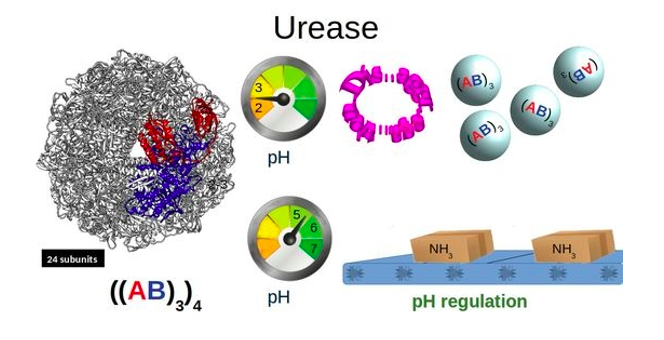Effect of pH on the supramolecular structure of helicobacter pylori urease by molecular dynamics simulations.
H. L. Barazorda-Ccahuana, B. Gómez, F. Mas, S. Madurga.
Polymers, 12 (2020) 2713.

Ammonia production from Helicobacter pylori urease allows the pH of the environment to be regulated. At very acidic pHs protein denaturation occurs.
The effect of pH on the supramolecular structure of Helicobacter pylori urease was studied by means of molecular dynamics simulations at seven different pHs. Appropriate urease charge distributions were calculated using a semi-grand canonical Monte Carlo (SGCMC) procedure that assigns each residue’s charge state depending on the assigned individual pKa obtained by PROPKA. The effect of pH on protein stability has been analyzed through root-mean-square deviation (RMSD), radius of gyration, solvent-accessible surface area, hydrogen bonds and salt bridges. Urease catalyses the hydrolysis of urea in 12 active sites that are covered by mobile regions that act like flaps. The mobility of these flaps is increased at acidic pHs. However, extreme acidic conditions cause urease to have the least number of stabilizing interactions. This initiates the process of denaturalization, wherein the four (αβ)3 subunits of the global structure ((αβ)3)4 of urease start to separate.
